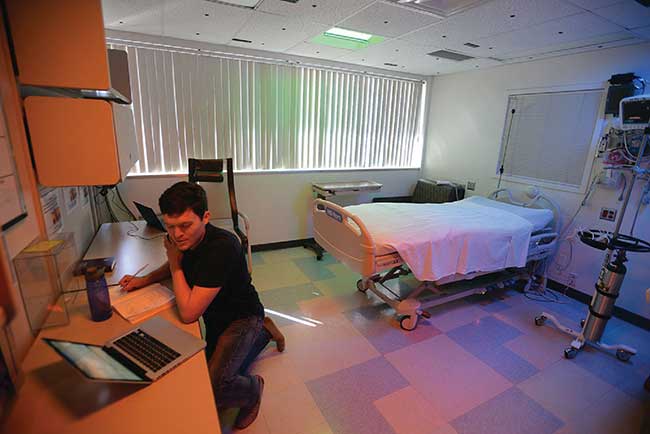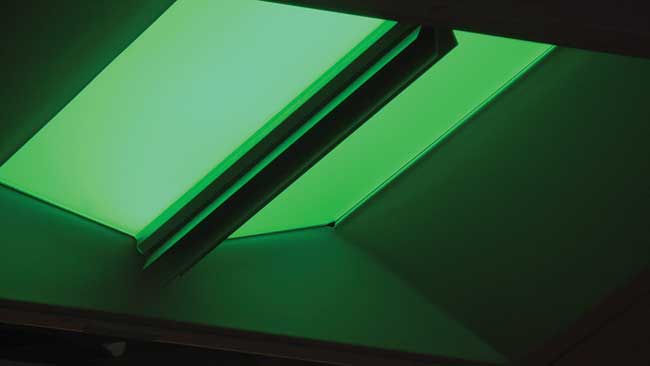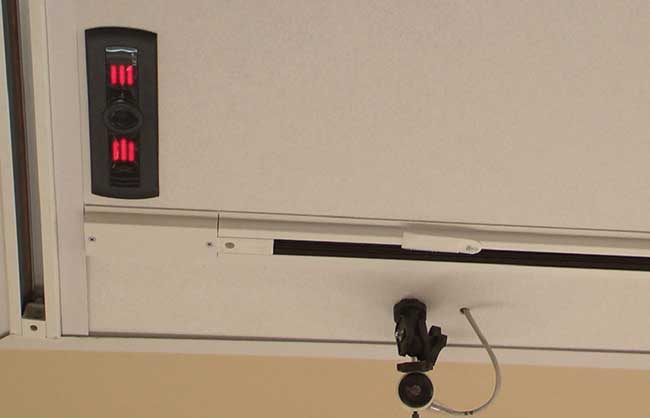
Smart Lighting Makes for Smart Health Care
Health and safety are of the utmost concern in hospital-type settings. However, doctors, nurses and caregivers can’t be with their patients around the clock. Imagine an eldercare facility or a hospital room where caregivers can discreetly monitor and “see” their patients without cameras in the rooms. The Center for Lighting Enabled Systems & Applications (LESA) at Rensselaer Polytechnic Institute (RPI) is trying to create such a place.

The LESA engineering research center used products from industry partners to install a customizable, self-adjusting LED lighting testbed at the University of New Mexico Health Sciences Center. The testbed can monitor patient vitality and enable studies of the impact of light on disorders such as depression and neurological conditions such as Parkinson’s disease. Courtesy of the Albuquerque Journal/Adolphe Pierre-Louis.
They have installed an inpatient lighting platform, or testbed, for their experimental research at their partner school, the University of New Mexico Health Sciences Center (UNM-HSC). Using color-tunable lighting, color sensors and time-of-flight sensors, the smart and responsive lighting testbed can determine room occupancy, track movements and detect falls. This type of smart lighting system also could be used to improve health care outcomes by monitoring patient vitality, including how rapidly patients are moving and any declines in physical activity.

Smart lighting application used for hospital inpatient setting testbed.
The integration of sensors and lighting controls allows researchers to program the lights to different colors and intensities, and then monitor the light via the sensors.
“We are building smart lighting systems that automatically adjust the right lighting for us at any given time, with light coming from the right direction, with the right color and intensity, optimized for human health and productivity,” said LESA director Bob Karlicek.
The computer-controlled lighting system was designed with products from Telelumen, Heptagon and Austria Microsystems — all industry members of the National Science Foundation Engineering Research Center, of which LESA is a part. The system mimics natural outdoor light.
Monitoring for patient safety is not the only function of the testbed. The researchers will use it to study diseases and disorders that have been shown to respond to light exposure of a particular spectrum, intensity and timing.
“Not only will this new technology allow us to study classic circadian rhythm sleep-wake disorders, but we will be able to also investigate the effect light plays on such behavioral health disorders as depression and dementia,” said Dr. Lee Brown, professor of internal medicine and director of the UNM-HSC sleep disorders program.
LESA researchers at RPI and UNM are currently using the immersive, fully controllable lighting system to study the impact of controlled lighting on sleep disorders.
Karlicek told Photonics Media that they plan to engage in many other studies involving the impact of high-quality, color-tunable lighting in health care and that in the future this type of system could have varied applications.

Color sensor (left) and time-of-flight sensor (right).
“Ultimately, certain forms of color-tunable lighting and light-based sensing is first going to be adopted by the health care and the eldercare industries as our experience with these types of systems grows,” said Karlicek. “As we generate more clinical data on how we can impact patient outcomes or human health and well-being, not only for the patient, but for the health care provider as well, this will trickle down to commercial environments and maybe even into residential environments.”
The multi-institutional smart lighting system could be just what the doctor ordered when it comes to patient care, health and well-being.
Published: September 2017